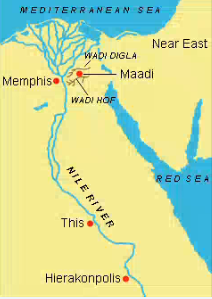题目解析:
【题目翻译】在第4段中,作者为什么提到 Hierakonpolis 和 Elkab 的城市?
A:表明孟菲斯自古以来的繁荣程度。
B:比较孟菲斯地区与它们相似的特征组合,为早期定居提供优势。
C:确定孟菲斯创建者在规划国家首都时遵循的模式。
D:建议在同一地区荒漠牧场和冲积可耕地的结合非常普遍。
【判定题型】:根据题干问法“why …… mention”,题目询问“ the cities of Hierakonpolis and Elkab”(文章引用内容)的修辞目的,可以判断本题为修辞目的题。
【关键词定位】:根据关键词“ the cities of Hierakonpolis and Elkab”,定位到 Passage 4 最后一句,原句为 As was the case with the cities of Hierakonpolis and Elkab, the combination within the same area of both desert pasturage and alluvial arable land (land suitable for growing crops) was a particularly attractive one for early settlement; this combination no doubt contributed to the prosperity of the Memphis region from early predynastic times.
【引用内容分析】本段最后一句,意思是“沙漠牧场和冲积耕地(适合耕种农作物的土地)在同一片区域的结合,使这片地区成为一个特别有吸引力的早期定居点;这样的组合无疑促进了前王朝时代早期孟斐斯地区的繁荣。”再来看前一句话“Moreover, the Wadis Hof and Digla provided the Memphis region with accessible desert pasturage.”通过结合这两句话,我们可知孟斐斯和 Hierakonpolis and Elkab 一样,都是沙漠牧场和冲积耕地结合的地区,因此作者举例是为了说明沙漠牧场和冲积耕地,同样能够促进孟斐斯的繁荣,为定居提供有利条件,这也是孟斐斯选址所考虑的一个重要原因。
【选项分析】
A 选项:举例说明孟斐斯早期的繁荣水平。错误,因为作者举这两个城市的例子,并不是为了说明早期的孟斐斯有多么的繁荣,而是为了强调它们拥有相似的地理特征,这一地理特征对城市繁荣非常有利。故 A 选项排除。
B 选择:符合文章意思,正确。
C 选项:建造者是参照这两座城市来建造孟斐斯的。错误,因为文章没有提及该信息。故 C 排除。
D 选项:说明在该地沙漠牧场和冲积耕地的结合非常普遍。错误,文章没有提及该信息,而且这不是作者举这两个城市的例子的主要目的。故 D 排除。


 The city of Memphis, located on the Nile near the modern city of Cairo, was founded around 3100 B.C. as the first capital of a recently united Egypt. The choice of Memphis by Egypt's first kings reflects the site's strategic importance. First, and most obvious, the apex of the Nile River delta was a politically opportune location for the state's administrative center, standing between the united lands of Upper and Lower Egypt and offering ready access to both parts of the country. The older predynastic (pre-3100 B.C.) centers of power, This and Hierakonpolis, were too remote from the vast expanse of the delta, which had been incorporated into the unified state. Only a city within easy reach of both the Nile valley to the south and the more spread out, difficult terrain to the north could provide the necessary political control that the rulers of early dynastic Egypt (roughly 3000-2600 B.C.) required.
The city of Memphis, located on the Nile near the modern city of Cairo, was founded around 3100 B.C. as the first capital of a recently united Egypt. The choice of Memphis by Egypt's first kings reflects the site's strategic importance. First, and most obvious, the apex of the Nile River delta was a politically opportune location for the state's administrative center, standing between the united lands of Upper and Lower Egypt and offering ready access to both parts of the country. The older predynastic (pre-3100 B.C.) centers of power, This and Hierakonpolis, were too remote from the vast expanse of the delta, which had been incorporated into the unified state. Only a city within easy reach of both the Nile valley to the south and the more spread out, difficult terrain to the north could provide the necessary political control that the rulers of early dynastic Egypt (roughly 3000-2600 B.C.) required.